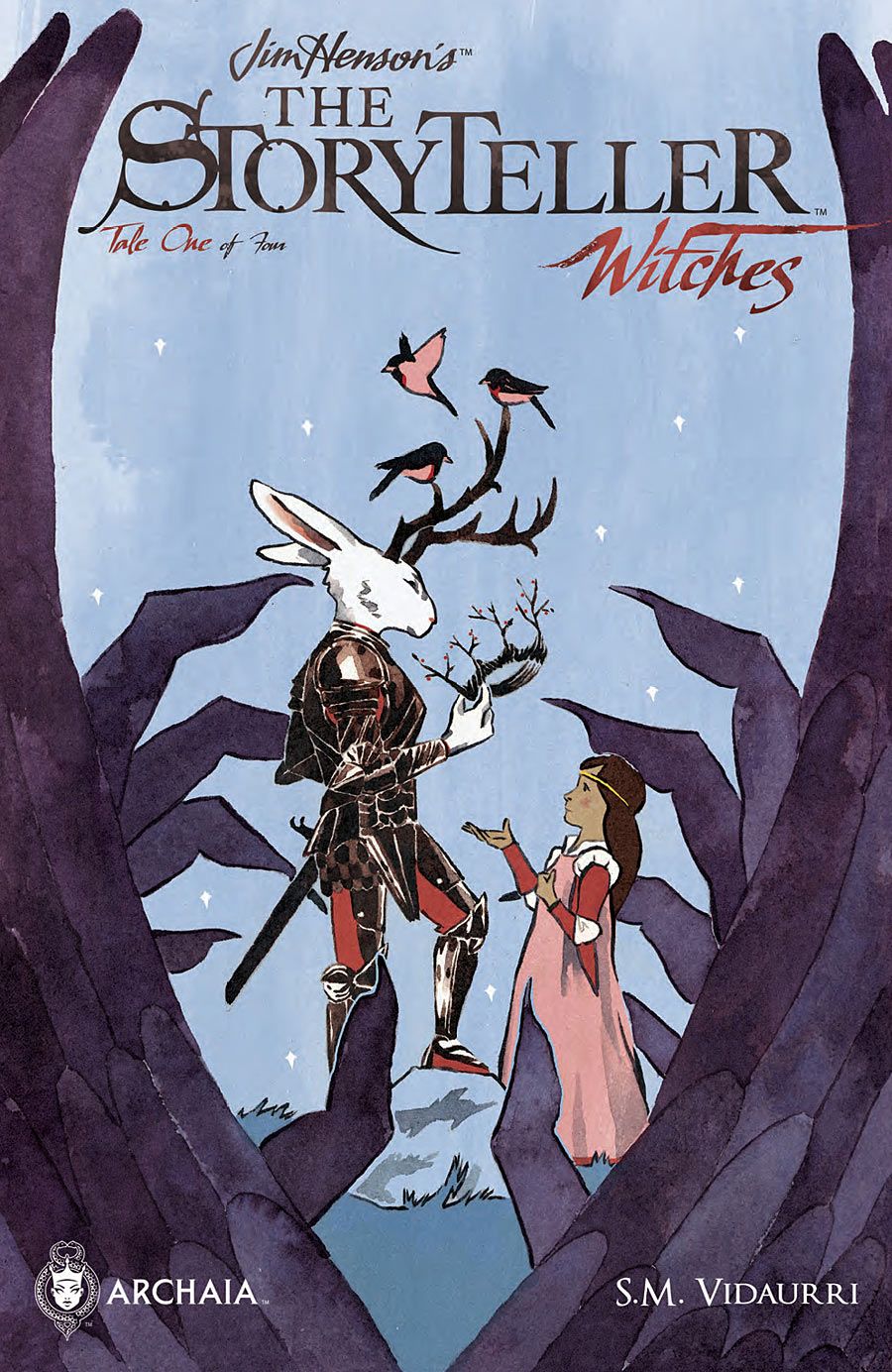The beautiful first issue of "The Storyteller: Witches" by S.M. Vidaurri is both a triumph and a failure of visual storytelling. Each individual page is a gorgeous integration of text and visuals, where the sentences are as likely to have spiral shapes as the spinning wheels. Words swirl and dive into fairytale borders, dragon-sized swans and ancient trees. However, beautiful as they are individually, the pages don't speak to or follow from one another, making the issue feel more like a series of particularly pretty posters than a flowing visual story. Still, this artwork really is stunning, and "The Storyteller: Witches" #1 is an enchanting charmer overall.
The series is called "The Storyteller," and S.M. Vidaurri really has created an issue that feels like the nicest storybook you've ever owned. The whole book seems to have been colored in watercolors, and the softness of it drew me right in. Though most pages stay in the same soft, bright palette, there are a few exceptions. When I turned to one page with surprising dark purples and a filigree of shining, delicate gold text, I literally "ooh"-ed aloud. (The font used in this issue is also absolutely perfect.)
Vidaurri's illustrations mix the conventional with the creative. His ever-inventive layouts, rather than being a series of panels, are often one-page, single-image summaries of the story in the text -- thematic suggestions of the action described, rather than a clear, linear show of it. Even when he does use paneling, borders made of flowers or vines will creep into the panels. However, while being this inventive, Vidaurri simultaneously emphasizes the most traditional fairytale elements of the story, with massive, patterned borders, creatures, castles and witches who look a bit like Little Red Riding Hood.
That said, it doesn't feel much like a comic, and the pages -- often due to those same borders and layouts I love -- don't flow into one another. Even the color scheme shifts entirely from one page to the next. When the pages don't feel related to each other, it makes the book unnecessarily jumpy. Some two-page spreads might have eased that -- and given what he does with one page, I would have loved to see Vidaurri stretch his imagination in a larger format.
The story itself, called "The Magic Swan Goose and the Lord of the Forest," has all the classic folktale elements: princesses, witches, magic forests and passed-down curses. Vidaurri gives the story a great sense of place. Though "witches" are in the series title, the forest is really the main character. Despite its classic structure, though, the plot has some surprises; its traditional trappings frame a feminist, environmentalist message.
The only nod to the title Storyteller is on the first and last page, with first a full-page drawing of him and then a closing outline of him with his dog. It's not so much in the literal style of the series but the spirit.
As an all-ages tale, "The Magic Swan Goose and the Lord of the Forest" is beautiful stuff. It's a perfect way to introduce new readers to the weird, wonderful ways that text and picture can play together.

